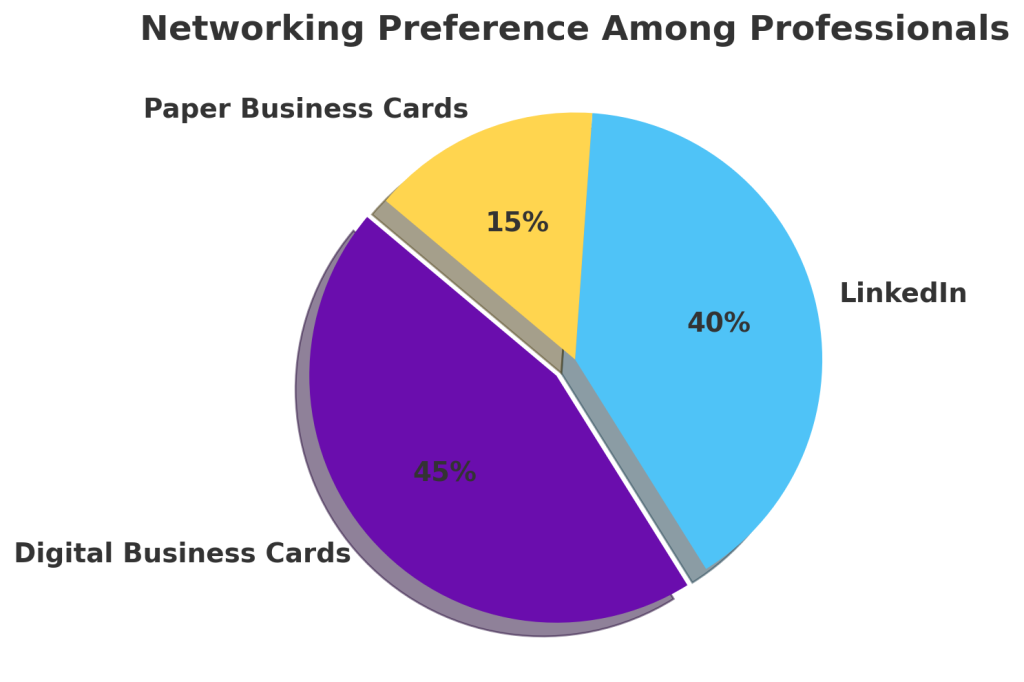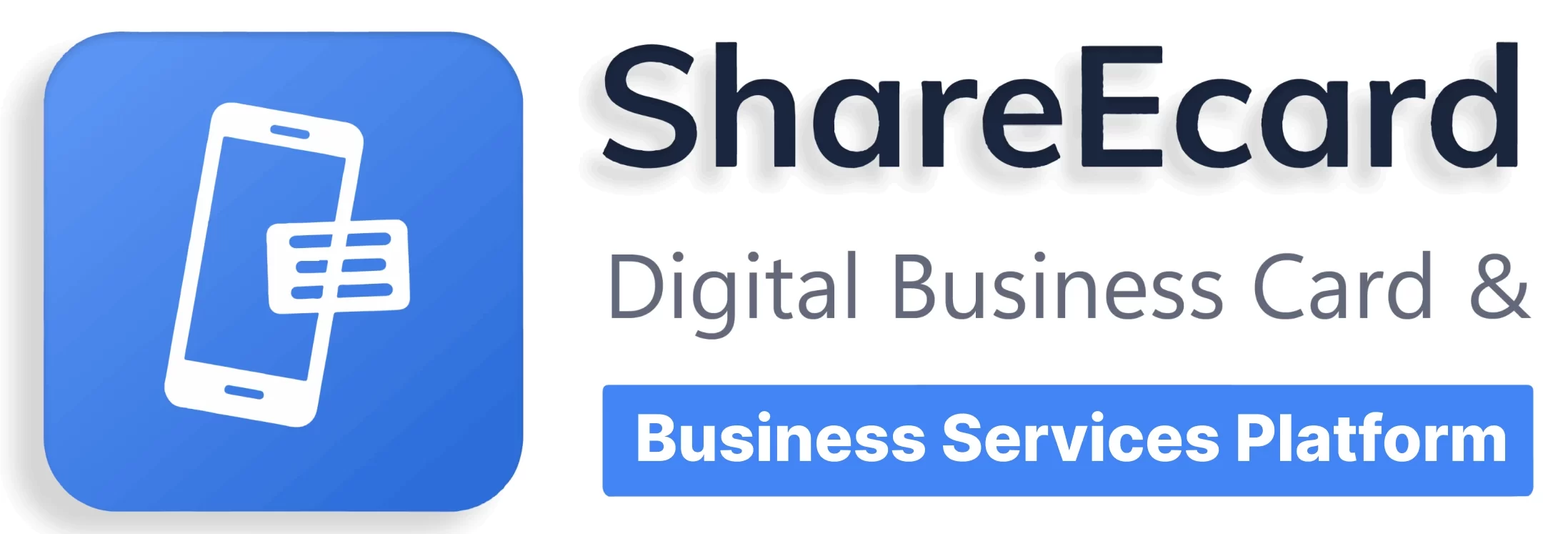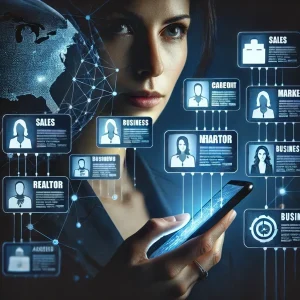In today’s fast-paced digital world, networking has evolved significantly. Traditional paper business cards are becoming obsolete, giving way to modern digital alternatives. While LinkedIn has long been considered the ultimate professional networking platform, digital business cards (also known as virtual business cards or eCards) are emerging as a dynamic alternative. But which one is better? Let’s break it down.
Understanding Digital Business Cards and LinkedIn
What is a Digital Business Card?
A digital business card is an electronic version of a traditional business card that can be shared via QR codes, email, NFC technology, or direct links. These cards allow professionals to exchange contact details seamlessly and often include interactive features such as:
- Clickable links to social media and websites
- Embedded videos
- Appointment scheduling
- Custom branding
- Smart contact saving and CRM integration
- AI-driven analytics for engagement tracking
What is LinkedIn?
LinkedIn is a professional networking platform with over 900 million users worldwide. It allows individuals to create profiles, connect with professionals, and share industry insights. Users can:
- Build professional relationships
- Showcase work experience and achievements
- Apply for jobs and recruit talent
- Engage in industry-related discussions
- Leverage AI-powered job recommendations and networking insights
Key Comparisons: Digital Business Cards vs. LinkedIn
1. Ease of Sharing
| Feature | Digital Business Cards | |
| Instant Sharing | Yes | No |
| QR Code Enabled | Yes | No |
| Account Required | No | Yes |
| NFC Technology | Yes | No |
- Digital Business Cards: Instantly shareable via QR code, email, SMS, or NFC. No account is required to view.
- LinkedIn: Requires the recipient to have a LinkedIn account to connect and interact.
2. Customization & Branding
| Feature | Digital Business Cards | |
| Custom Design | Yes | No |
| Brand Integration | Yes | Limited |
| Multimedia Support | Yes | No |
- Digital Business Cards: Highly customizable with company logos, color schemes, multimedia integration, and AI-driven design templates.
- LinkedIn: Limited customization options; profiles follow a standard template with text and images.
3. Offline Accessibility
- Digital Business Cards: Normally installed on a smartphone, used offline, and shared anytime without an internet connection.
- LinkedIn: Requires an internet connection to access and interact with profiles.
4. Privacy and Control
- Digital Business Cards: Users control who receives their contact details and how much information is shared.
- LinkedIn: Profiles are public by default, and connections can send messages freely.
5. Professional Reach
- Digital Business Cards: Ideal for personal and direct networking at events, conferences, and meetings.
- LinkedIn: Better for on-line professional networking, job hunting, and industry engagement.
6. Interactivity and Engagement
- Digital Business Cards: Offers interactive features such as live links, videos, AI-powered lead tracking, and one-click actions.
- LinkedIn: Provides professional networking features but is limited in direct engagement methods.
7. Cost Consideration
- Digital Business Cards: Many providers offer free basic versions, while premium options include advanced features like CRM integrations and AI-powered analytics.
- LinkedIn: Free for standard use, but LinkedIn Premium comes at a cost for enhanced networking features.
Technology Behind Digital Business Cards
Modern digital business cards leverage several advanced technologies to enhance networking efficiency:
- Near Field Communication (NFC): Enables instant sharing of business card details via a simple tap.
- Artificial Intelligence (AI): AI-driven analytics help track engagements, follow-ups, and optimize networking strategies.
- Cloud Storage & Integration: Seamless CRM integrations allow users to manage contacts in Salesforce, HubSpot, and other business platforms.
- Blockchain for Security: Some platforms use blockchain to ensure data security and prevent unauthorized access.
Networking Preference
- Digital Business Cards: 45%
- LinkedIn: 40%
- Paper Business Cards: 15%

Growing Your Business and Enhancing Reach with Technology
1. AI-Powered Digital Business Cards: Smart Networking & Lead Generation
✅ Seamless Networking: Instantly share contact details with potential clients, partners, or investors without worrying about lost paper cards.
✅ AI-Driven Lead Scoring: Identify high-value contacts based on engagement and interaction data.
✅ Global Accessibility: Reach international clients without geographic limitations, as digital business cards can be shared worldwide.
✅ Cost-Effective Marketing: Reduce printing costs while maintaining a sleek and modern brand image.
2. LinkedIn’s Technological Edge for Brand Authority
✅ AI-Powered Recommendations: Smart content and job suggestions based on user activity.
✅ Enhanced SEO & Discoverability: Optimized profiles improve search rankings within LinkedIn and Google.
✅ Professional Analytics: LinkedIn provides insights into profile views, connection requests, and content engagement.
✅ Automated Messaging & Networking: AI chatbots assist with outreach, engagement, and follow-ups.
3. Combining Both for Maximum Tech-Driven Growth
By integrating digital business cards and LinkedIn into your business strategy, you create a well-rounded, technology-enhanced networking approach:
- Use AI-powered digital business cards for instant networking and in-person meetings.
- Leverage LinkedIn’s AI-driven insights to nurture professional relationships and build long-term credibility.
- Share your digital business card link on your LinkedIn profile to make it easier for new connections to save your contact details.
- Utilize blockchain-enabled security to ensure safe and reliable data sharing.
Final Verdict: Which One Wins?
Feature Comparison (Out of 10)
| Feature | Digital Business Cards | |
| AI-Powered Insights | 9 | 10 |
| Ease of Sharing | 10 | 6 |
| Customization | 9 | 5 |
| Privacy Control | 9 | 6 |
| Offline Use | 10 | 2 |
| Professional Reach | 7 | 10 |
| Cost Efficiency | 8 | 6 |
Conclusion
Digital business cards and LinkedIn serve different yet complementary purposes. With AI, NFC, and blockchain technology, digital business cards provide instant, secure, and customizable networking solutions. Meanwhile, LinkedIn’s AI-driven engagement and SEO-optimized profiles offer long-term professional visibility. Using both ensures a technology-backed, multi-dimensional networking strategy that enhances professional connections, credibility, and business growth.
Get Started with Tech-Enabled Networking!
🚀 Create AI-powered digital business cards with ShareEcard 📈 Optimize LinkedIn engagement with LinkedIn Learning.By leveraging cutting-edge technology, professionals can maximize networking efficiency and drive exponential business growth!




